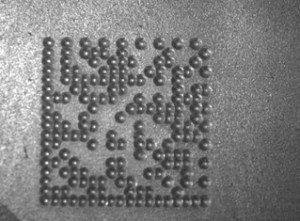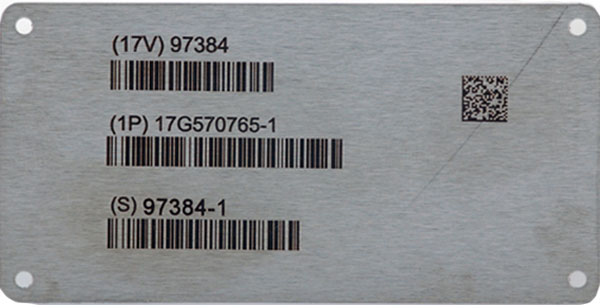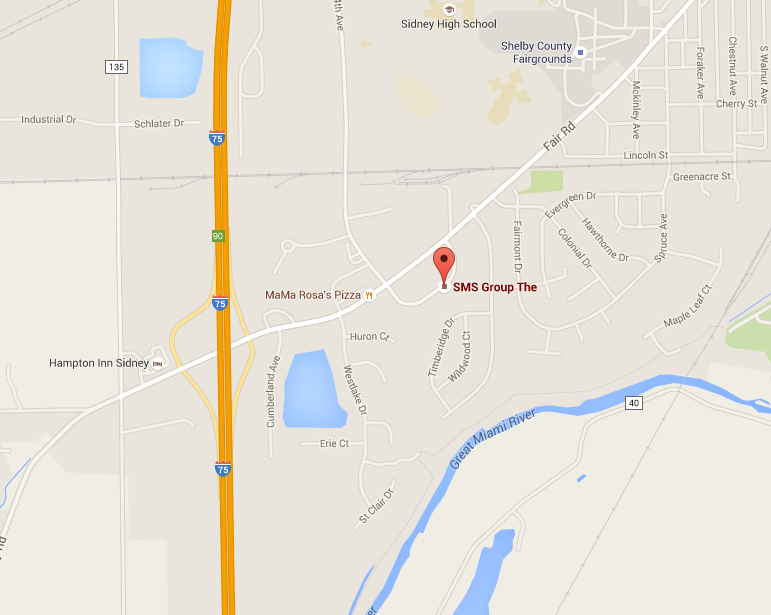4 Commonly Asked Questions about Direct Part Marking
If you haven’t heard of Direct Part Marking (DPM), here’s a quick definition: DPM is the permanent marking of a barcode on certain materials such as surgical tools, automotive parts, electronics, or other items that are generally made of a hard material like metal, glass, plastic and some softer materials like leather or even rubber.
The purpose of DPM is to have the ability to trace products throughout their lifecycle, particularly those items that are subject to harsh environments (like automotive parts, for example). DPM is used in a variety of industries, such as automotive, aerospace, weapons, and manufacturing. Even some national departments of defense demand physical marks to be embedded on certain assets. You may think of DPM as being mainly used on large items, but something even as small as jewelry could be DPM’d.
What type of barcode is used for DPM?
DataMatrix codes are the most commonly used codes for DPM. In a nutshell, the 2D DataMatrix code is the preferred code because of the amount of error correction it offers. This is especially important because the items that are being marked go through the rigors of their respective environments, making barcodes particularly difficult to read (imagine a barcode printed on an engine block, for example). Being exposed to dust, dirt and other contaminants would normally affect the readability of the barcode, not to mention the actual handling of the items themselves. Error correction ability allows severely damaged codes to still be read accurately.
Why is 2D the most commonly used code for DPM?
 2D codes can pack a large amount of data as opposed to linear codes because they can carry data in two directions on the code vs. just one. To give you an idea of the relative size, a 1D barcode can store around 25 characters up to about 80 characters depending on whether it’s Code 128 or Code 39, but a 2D code can store up to 2,000 characters. Manufacturers like to use the 2D code not only for the storage capacity, but for their relative size as well (square vs. rectangular). The flexibility of a 2D code allows for the variation in the amount of information stored in the barcode as well as the size of the item being marked. The most popular uses of the mark are for applications that require:
2D codes can pack a large amount of data as opposed to linear codes because they can carry data in two directions on the code vs. just one. To give you an idea of the relative size, a 1D barcode can store around 25 characters up to about 80 characters depending on whether it’s Code 128 or Code 39, but a 2D code can store up to 2,000 characters. Manufacturers like to use the 2D code not only for the storage capacity, but for their relative size as well (square vs. rectangular). The flexibility of a 2D code allows for the variation in the amount of information stored in the barcode as well as the size of the item being marked. The most popular uses of the mark are for applications that require:
- Traceability
- Verification & Error Proofing
- Part Identification
How is the mark applied?
There are two methods of applying the code to the material: Dot peening and laser marking. A dot-peening machine uses a sharp tool to impinge repeatedly at precise locations on the material. This is a common method to mark on metals because it will not break down the metallic bonds; maintaining the integrity of the material. Laser marking is another method of creating marks on certain materials. The process involves a beam of focused light energy onto the surface. The light converts to heat energy and creates a mark by melting, ablation or a chemical reaction to create the mark. With regard to this process, there is a bit of a science to marrying the type of laser with the material being marked in order to produce readable marks.

What are the pitfalls of DPM?
 The most common complaint is that the 2D barcode is difficult to read, but in most cases it’s actually the result of the printing process. If the code is not printed properly, the code will be difficult (or even impossible) to read. To determine whether or not the code is readable, a DPM verifier is used to grade the code and determine the quality level. Best practice includes resolution that is at least 2x higher than that of the DPM reader, and the mark should be immediately verified to maintain quality throughout the printing process.
The most common complaint is that the 2D barcode is difficult to read, but in most cases it’s actually the result of the printing process. If the code is not printed properly, the code will be difficult (or even impossible) to read. To determine whether or not the code is readable, a DPM verifier is used to grade the code and determine the quality level. Best practice includes resolution that is at least 2x higher than that of the DPM reader, and the mark should be immediately verified to maintain quality throughout the printing process.
When to Choose DPM:
- The part is too small for a barcode label
- The item will be exposed to environmental conditions that traditional labeling may not withstand
- When it could be more cost effective to DPM over barcode labels
- If identification or data must be tracked throughout the life of the item
- If the item could be marked during the manufacturing process
If you’re considering DPM, there’s a lot more to learn. Contact us today to discuss the technology, typical use cases and reader options to help you make more informed decisions down the road.


